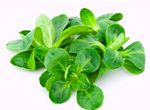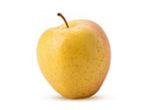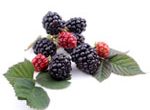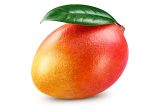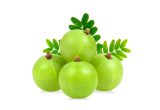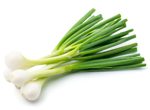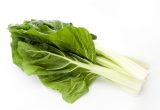Black mulberry

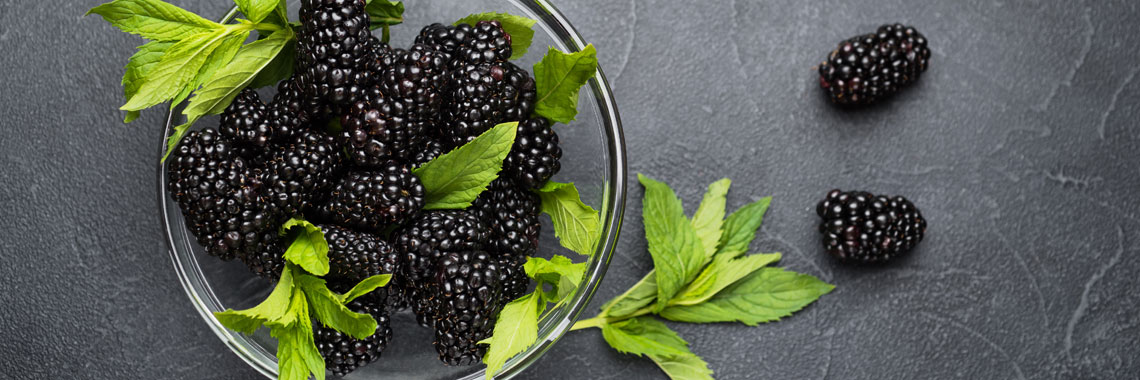
Description
- The black mulberry (Morus nigra L.) belongs to the Moraceae family.
- This bush grows in the subtropics of the Northern Hemisphere, but also in the tropics of the Southern Hemisphere (Ercisli, 2008).
- The black mulberry, originally from Iran, is cultivated for its fruit in southern Europe and southwest Asia. It is the most prominent species in the Mediterranean countries (Ercisli, 2008).
- There are three main mulberry species: black (Morus nigra), red (Morus rubra) and white (Morus alba) (Ercisli, 2008).
PHYSICAL AND ORGANOLEPTIC CHARACTERISTICS
- The most colourful fruits are rich in phenolic compounds, such as flavonoids, including anthocyanins, and carotenoids (Imran, 2010).
- Anthocyanins, mainly cyanidin-3-glucoside and cyanidin-3-rutoside, are the pigments responsible for the red-black colour of black mulberries (Fazaeli, 2013; Soeroso, 2017).
- Mannose, rhamnose, glucuronic acid, galactose, arabinose and galacturonic acid are thought to be the sugars present in black mulberries. However, the content of these compounds reportedly varies from fruit to fruit (Wang, 2018).
- Ethyl linolenate contributes mostly to the unique flavour of black mulberries (Zhu, 2018).
- Black mulberries are reported to contain 41 volatile compounds, the majority of which are sulphur compounds, 2-(methylthio)-ethanol, methionol, dimethylsulphide, methional and 3-ethylthiophene (Zhu, 2018).
COMPOSITION CHARACTERISTICS (excluding macronutrients, vitamins and minerals)
- Black mulberries are reported to contain 55 bioactive polyphenols, including anthocyanins such as procyanidins, cyanidin-3-O-glucoside, cyanidin-3-O-rutinoside, and pelargonidin-3-O-glucoside (Khalifa, 2018; Li, 2018), flavonols, flavanones and phenolic acids (gallic acid and ellagic acid) (Calín-Sánchez, 2013; Khalifa, 2018).
- However, polyphenol contents may vary among black mulberry cultivars (Khalifa, 2018).
- High levels of phenolic acids, including chlorogenic acid, and flavonoids, such as quercetin and anthocyanins, give black mulberries antioxidant, anti-inflammatory, immuno-modulating, anti-fatigue, neuro-protective, anti-atherosclerosis, anti-thrombotic, anti-cancer, anti-diabetic and anti-obesity properties (de Pádua, 2018; Khalifa, 2018).
- Containing significant amounts of flavonoids, polysaccharides and ascorbic acid, black mulberries possess multiple biological activities, such as hepatoprotective, hypo-lipidemic and anti-apoptotic properties (Han, 2017).
RAW
The following values are approximate and depend on variety, season, ripeness, cultivation conditions, etc.
The black mulberry provides on average 45.10 calories (kcal) per 100 g, i.e. 190 kJ. A portion of black mulberries weighs an average of 140 g, providing an energy intake of 63.14 kcal.
COMPOSITION TABLES
For each nutrient, the tables provide information on the content, the minimum and maximum values, as well as the percentage of the Dietary Reference Values (DRVs) for 100 g net of raw black mulberries.
MACRONUTRIENTS
| Constituent (g) | Average content |
Min-Max per 100g |
DRV% |
|---|---|---|---|
| Water | 87,70 | - | - |
| Fibers | 1,70 | - | - |
| Carbohydrates | 8,10 | - | 3,12 |
| Sugars | 8,10 | - | 9 |
| Lipids | 0,39 | - | 0,56 |
| Saturated fat | 0,027 | - | 0,14 |
| Protein | 1,44 | - | 2,88 |
| Constituent (g) | Amount | Min-Max | DRV% |
|---|---|---|---|
| Water | Ciqual 2020 | - | - |
| Fibers | Ciqual 2020 | - | - |
| Carbohydrates | Ciqual 2020 | - | Règlement (UE) N°1169/2011 du parlement Européen et du conseil du 25 octobre 2011 |
| Sugars | Ciqual 2020 | - | Règlement (UE) N°1169/2011 du parlement Européen et du conseil du 25 octobre 2011 |
| Lipids | Ciqual 2020 | - | Règlement (UE) N°1169/2011 du parlement Européen et du conseil du 25 octobre 2011 |
| Saturated fat | Ciqual 2020 | - | Règlement (UE) N°1169/2011 du parlement Européen et du conseil du 25 octobre 2011 |
| Protein | Ciqual 2020 | - | Règlement (UE) N°1169/2011 du parlement Européen et du conseil du 25 octobre 2011 |
Zoom on carbohydrates
- Black mulberries contain 8.10 g of carbohydrates per 100 g, supplied as sugars.
- This is below the average amount of this macronutrient in fresh fruit: 11.31 g per 100 g.
Zoom on fibres
- The amount of fibre in black mulberries (1.70 g per 100 g) is lower than the average content of fibre in fresh fruit (2.77 g per 100 g)
Zoom on proteins
- The amount of protein in black mulberries (1.44 g per 100 g) is higher than the average protein in fresh fruit (0.93 g per 100 g).
Zoom on lipids
- As for the amount of fat, it is lower than average (0.39 g per 100 g vs. 0.56 g per 100 g on average).
MINERALS AND TRACE ELEMENTS
| Constituent | Average content |
Min-Max per 100g |
DRV% |
|---|---|---|---|
| Calcium (mg) | 39 | - | 4,88 |
| Chloride (mg) | - | - | - |
| Copper (mg) | 0,06 | - | 6 |
| Iron (mg) | 1,85 | - | 13,21 |
| Iodine (µg) | 0,40 | - | 0,27 |
| Magnesium (mg) | 18 | - | 4,80 |
| Manganese (mg) | 1,10 | - | 55 |
| Phosphorus (mg) | 38 | - | 5,43 |
| Potassium (mg) | 194 | - | 9,70 |
| Selenium (µg) | - | - | - |
| Sodium (mg) | 10 | - | - |
| Zinc (mg) | 0,12 | - | 1,20 |
| Constituent | Amount | Min-Max | DRV% |
|---|---|---|---|
| Calcium (mg) | Ciqual 2020 | - | Règlement (UE) N°1169/2011 du parlement Européen et du conseil du 25 octobre 2011 |
| Chloride (mg) | Ciqual 2020 | - | Règlement (UE) N°1169/2011 du parlement Européen et du conseil du 25 octobre 2011 |
| Copper (mg) | Ciqual 2020 | - | Règlement (UE) N°1169/2011 du parlement Européen et du conseil du 25 octobre 2011 |
| Iron (mg) | Ciqual 2020 | - | Règlement (UE) N°1169/2011 du parlement Européen et du conseil du 25 octobre 2011 |
| Iodine (µg) | Ciqual 2020 | - | Règlement (UE) N°1169/2011 du parlement Européen et du conseil du 25 octobre 2011 |
| Magnesium (mg) | Ciqual 2020 | - | Règlement (UE) N°1169/2011 du parlement Européen et du conseil du 25 octobre 2011 |
| Manganese (mg) | Ciqual 2020 | - | Règlement (UE) N°1169/2011 du parlement Européen et du conseil du 25 octobre 2011 |
| Phosphorus (mg) | Ciqual 2020 | - | Règlement (UE) N°1169/2011 du parlement Européen et du conseil du 25 octobre 2011 |
| Potassium (mg) | Ciqual 2020 | - | Règlement (UE) N°1169/2011 du parlement Européen et du conseil du 25 octobre 2011 |
| Selenium (µg) | Ciqual 2020 | - | Règlement (UE) N°1169/2011 du parlement Européen et du conseil du 25 octobre 2011 |
| Sodium (mg) | Ciqual 2020 | - | - |
| Zinc (mg) | Ciqual 2020 | - | Règlement (UE) N°1169/2011 du parlement Européen et du conseil du 25 octobre 2011 |
Zoom on minerals and trace elements
- Black mulberries are high in manganese as they provide the equivalent of 55% of DRVs, i.e. 1.10 mg per 100 g. According to the data of the Ciqual 2020 table, the black mulberry is, together with the blackberry, the fruit that contains the most manganese.
- Its contribution in iron is notable. It contains 1.85 mg of iron per 100 g, equivalent to 13.21% of DRVs. In fact, the black mulberry is the fruit with the highest iron content, according to the Ciqual 2020 table.
- The black mulberry also provides the equivalent of 9.70% of DRVs for potassium, i.e. 194 mg per 100 g.
- The quantity of other minerals and trace elements represents less than 7% of DRVs.
VITAMINS
| Constituent | Average content |
Min-Max per 100g |
DRV% |
|---|---|---|---|
| Provitamin A Beta-carotene (µg) | 9 | - | - |
| Vitamin A equivalent (µg) | 1,50 | - | 0,19 |
| Vitamin B1 (mg) | 0,029 | - | 2,64 |
| Vitamin B2 (mg) | 0,10 | - | 7,14 |
| Vitamin B3 (mg) | 0,62 | - | 3,88 |
| Vitamin B5 (mg) | 0,26 | - | 4,33 |
| Vitamin B6 (mg) | 0,05 | - | 3,57 |
| Vitamin B9 (µg) | 6 | - | 3 |
| Vitamin C (mg) | 36,40 | - | 45,50 |
| Vitamin E (mg) | 0,87 | - | 7,25 |
| Vitamin K1 (µg) | 7,80 | - | 10,40 |
| Constituent | Amount | Min-Max | DRV% |
|---|---|---|---|
| Provitamin A Beta-carotene (µg) | Ciqual 2020 | - | - |
| Vitamin A equivalent (µg) | Calcul à partir de la valeur Provitamine A Béta-carotène* | - | Règlement (UE) N°1169/2011 du parlement Européen et du conseil du 25 octobre 2011 |
| Vitamin B1 (mg) | Ciqual 2020 | - | Règlement (UE) N°1169/2011 du parlement Européen et du conseil du 25 octobre 2011 |
| Vitamin B2 (mg) | Ciqual 2020 | - | Règlement (UE) N°1169/2011 du parlement Européen et du conseil du 25 octobre 2011 |
| Vitamin B3 (mg) | Ciqual 2020 | - | Règlement (UE) N°1169/2011 du parlement Européen et du conseil du 25 octobre 2011 |
| Vitamin B5 (mg) | Ciqual 2020 | - | Règlement (UE) N°1169/2011 du parlement Européen et du conseil du 25 octobre 2011 |
| Vitamin B6 (mg) | Ciqual 2020 | - | Règlement (UE) N°1169/2011 du parlement Européen et du conseil du 25 octobre 2011 |
| Vitamin B9 (µg) | Ciqual 2020 | - | Règlement (UE) N°1169/2011 du parlement Européen et du conseil du 25 octobre 2011 |
| Vitamin C (mg) | Ciqual 2020 | - | Règlement (UE) N°1169/2011 du parlement Européen et du conseil du 25 octobre 2011 |
| Vitamin E (mg) | Ciqual 2020 | - | Règlement (UE) N°1169/2011 du parlement Européen et du conseil du 25 octobre 2011 |
| Vitamin K1 (µg) | Ciqual 2020 | - | Règlement (UE) N°1169/2011 du parlement Européen et du conseil du 25 octobre 2011 |
Zoom on vitamins
- Black mulberries are high in vitamin C as they provide the equivalent of 45.50% of DRVs, i.e. 36.40 mg per 100 g.
- They provide a significant amount of vitamin K1, equivalent to 10.40 % of DRVs, i.e. 7.80 µg per 100 g.
- Black mulberries also provide the equivalent of:
- The amount of other vitamins represents less than 5% of DRVs.
* Calculation made: Beta-Carotene / 6 + retinol
POLYPHENOLS
Nutrition and health claims
According to the definitions of nutrition claims as set out in Regulation (EC) No 1924/2006 on nutrition and health claims, and in view of the composition of black mulberries, the following claims may be used:
NUTRITION BENEFITS OF BLACK MULBERRIES
- High in manganese (100 g of black mulberries provide more than 30% of DRVs).
- High in vitamin C (100 g of black mulberries provide more than 30% of DRVs)
- Low in fat (100 g of black mulberries contain less than 3 g of fat)
HEALTH CLAIMS (for a consumption of 100 g of black mulberries)
Manganese
- Manganese contributes to:
- normal energy-yielding metabolism,
- maintenance of normal bones,
- normal formation of connective tissues,
- protection of cells from oxidative stress.
Vitamin C
- Vitamin C contributes to:
- normal function of the immune system during and after intense physical exercise,
- normal collagen formation for the normal function of blood vessels,
- normal collagen formation for the normal function of bones,
- normal collagen formation for the normal function of cartilage,
- normal collagen formation for the normal function of gums,
- normal collagen formation for the normal function of skin,
- normal collagen formation for the normal function of teeth,
- normal energy-yielding metabolism,
- normal functioning of the nervous system,
- normal psychological function,
- normal function of the immune system,
- protection of cells from oxidative stress,
- reduction of tiredness and fatigue,
- regeneration of the reduced form of vitamin E.
- Vitamin C increases iron absorption.
References
- Agence nationale de sécurité sanitaire de l’alimentation, de l’environnement et du travail. Table de composition nutritionnelle des aliments Ciqual 2020. Consultée le 17/08/2020 depuis le site internet Ciqual https://ciqual.anses.fr/
- Agence nationale de sécurité sanitaire de l’alimentation, de l’environnement et du travail. Table de composition nutritionnelle des aliments Ciqual pour le calcul des apports nutritionnels CALNUT 2020. Consultée le 22/09/2020 depuis le site internet Ciqual https://ciqual.anses.fr/
- Calín-Sánchez A, Martínez-Nicolás JJ, Munera-Picazo S, Carbonell-Barrachina AA, Legua P, Hernández F. Bioactive compounds and sensory quality of black and white mulberries grown in Spain. Plant Foods Hum Nutr. 2013; 68(4):370-7.
- de Pádua Lúcio K, Rabelo ACS, Araújo CM, Brandão GC, de Souza GHB, da Silva RG, et al. Anti-Inflammatory and Antioxidant Properties of Black Mulberry (Morus nigra L.) in a Model of LPS-Induced Sepsis. Oxidative Medicine and Cellular Longevity.2018: 5048031.
- Ercisli S, Orhan E. Some physico-chemical characteristics of black mulberry (Morus nigra L.) genotypes from Northeast Anatolia region of Turkey. Sci Hortic. 2008; 116:41–6.
- Fazaeli M, Hojjatpanah G, Emam-Djomeh Z. Effets de la méthode de chauffage et des conditions sur le taux d’évaporation et les attributs de qualité du concentré de jus de mûrier noir (Morus nigra). J Food Sci Technol. 2013 Fév;50(1):35-43. doi: 10.1007/s13197-011-0246-y. Epub 2011 5 mars. PMID: 24425885; PMCID: PMC3550951.
- Han Q, Gao H, Chen H, Fang X, Wu W. Precooling and ozone treatments affects postharvest quality of black mulberry (Morus nigra) fruits. Food Chemistry. 2017;221: 1947–53.
- Imran M, Khan H, Shah M, Khan R, Khan F. Chemical composition and antioxidant activity of certain Morus species. J Zhejiang Univ Sci B. 2010;11(12):973-80.
- Khalifa I, Zhu W, Li K, Li C. Polyphenols of mulberry fruits as multifaceted compounds: Compositions, metabolism, health benefits, and stability—A structural review. Journal of Functional Foods. 2018;40: 28–43.
- Li Y, Bao T, Chen W. Comparison of the protective effect of black and white mulberry against ethyl carbamate-induced cytotoxicity and oxidative damage. Food Chemistry. 2018;243: 65–73.
- Règlement (CE) N° 1924/2006 du Parlement européen et du Conseil du 20 décembre 2006 concernant les allégations nutritionnelles et de santé portant sur les denrées alimentaires.
- Règlement (UE) N°432/2012 de la Commission du 16 mai 2012 établissant une liste des allégations de santé autorisées portant sur les denrées alimentaires, autres que celles faisant référence à la réduction du risque de maladie ainsi qu’au développement et à la santé infantiles.
- Règlement (UE) n°1169/2011 du Parlement européen et du Conseil du 25 octobre 2011 concernant l’information des consommateurs sur les denrées alimentaires, modifiant les règlements (CE) n°1924/2006 et (CE) n°1925/2006 du Parlement européen et de Conseil et abrogeant la directive 87/250/CEE de la Commission, la directive 90/496/CEE du Conseil, la directive 1999/10/CE de la Commission, la directive 200/13/CE du Parlement européen et du Conseil, les directives 2002/67/CE et 2008/5/CE de la Commission et le règlement (CE) n°608/2004 de la Commission.
- Soeroso EG, Lestario LN, Martono Y. Sugar addition can increase color stability of anthocyanin extract of black mulberry fruit towards fluorescent light. Jurnal Teknologi dan Industri Pangan. 2017;28(1): 62–9.
- Wang W, Li X, Bao X, Gao L, Tao Y. Extraction of polysaccharides from black mulberry fruit and their effect on enhancing antioxidant activity. International Journal of Biological Macromolecules. 2018;120: 1420–29.
- Zhu J, Wang L, Xiao Z, Niu Y. Characterization of the key aroma compounds in mulberry fruits by application of gas chromatography–olfactometry (GC-O), odor activity value (OAV), gas chromatography-mass spectrometry (GC–MS) and flame photometric detection (FPD). Food Chemistry. 2018;245: 775–85.





